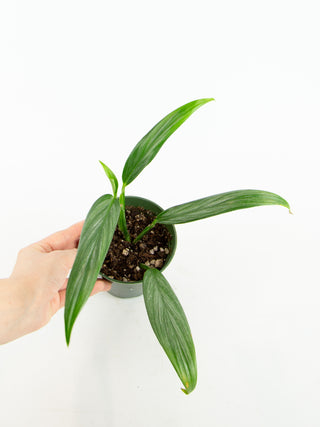This species is native to the to a wide range across southeast Asia, Papua New Guinea, and Australia where they’re found climbing up trees. They currently have a long-narrow and silvery-blue hue to them. As this plant matures, their leaves will get quite long, and they will lose the blue shine to it.
Care:
Like most aroids, these naturally are climbing up trees in their native habitat. We can simulate these conditions by using a moss pole. They enjoy bright indirect light while avoiding harsh direct sun. We recommend watering when the top 1-2" of soil is dry. This may roughly be about once a week depending on your home environment. When repotting, use a semi coarse soil that will drain water well.
This species is native to the to a wide range across southeast Asia, Papua New Guinea, and Australia where they’re found climbing up trees. They currently have a long-narrow and silvery-blue hue to them. As this plant matures, their leaves will get quite long, and they will lose the blue shine to it.
Care:
Like most aroids, these naturally are climbing up trees in their native habitat. We can simulate these conditions by using a moss pole. They enjoy bright indirect light while avoiding harsh direct sun. We recommend watering when the top 1-2" of soil is dry. This may roughly be about once a week depending on your home environment. When repotting, use a semi coarse soil that will drain water well.

